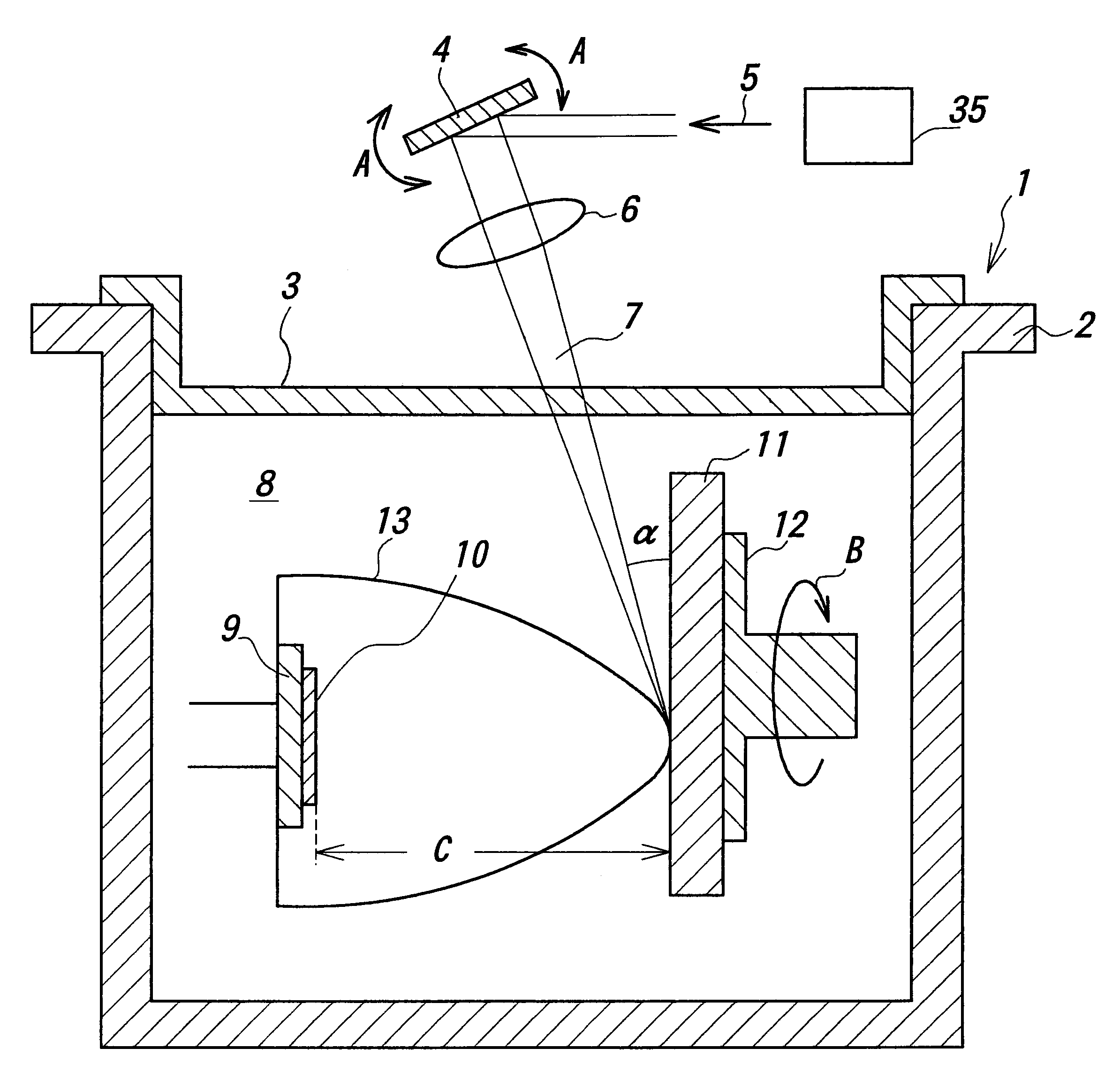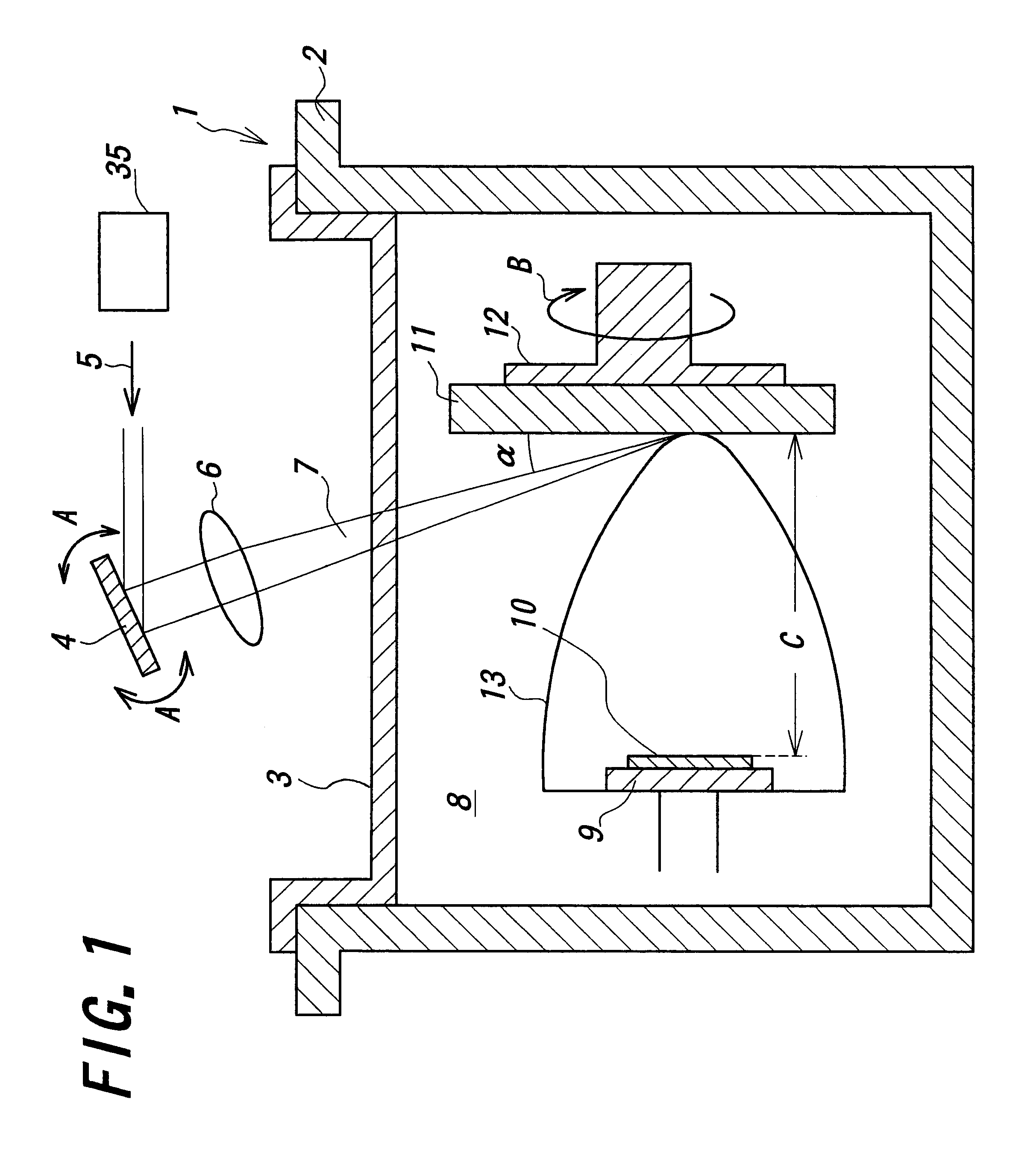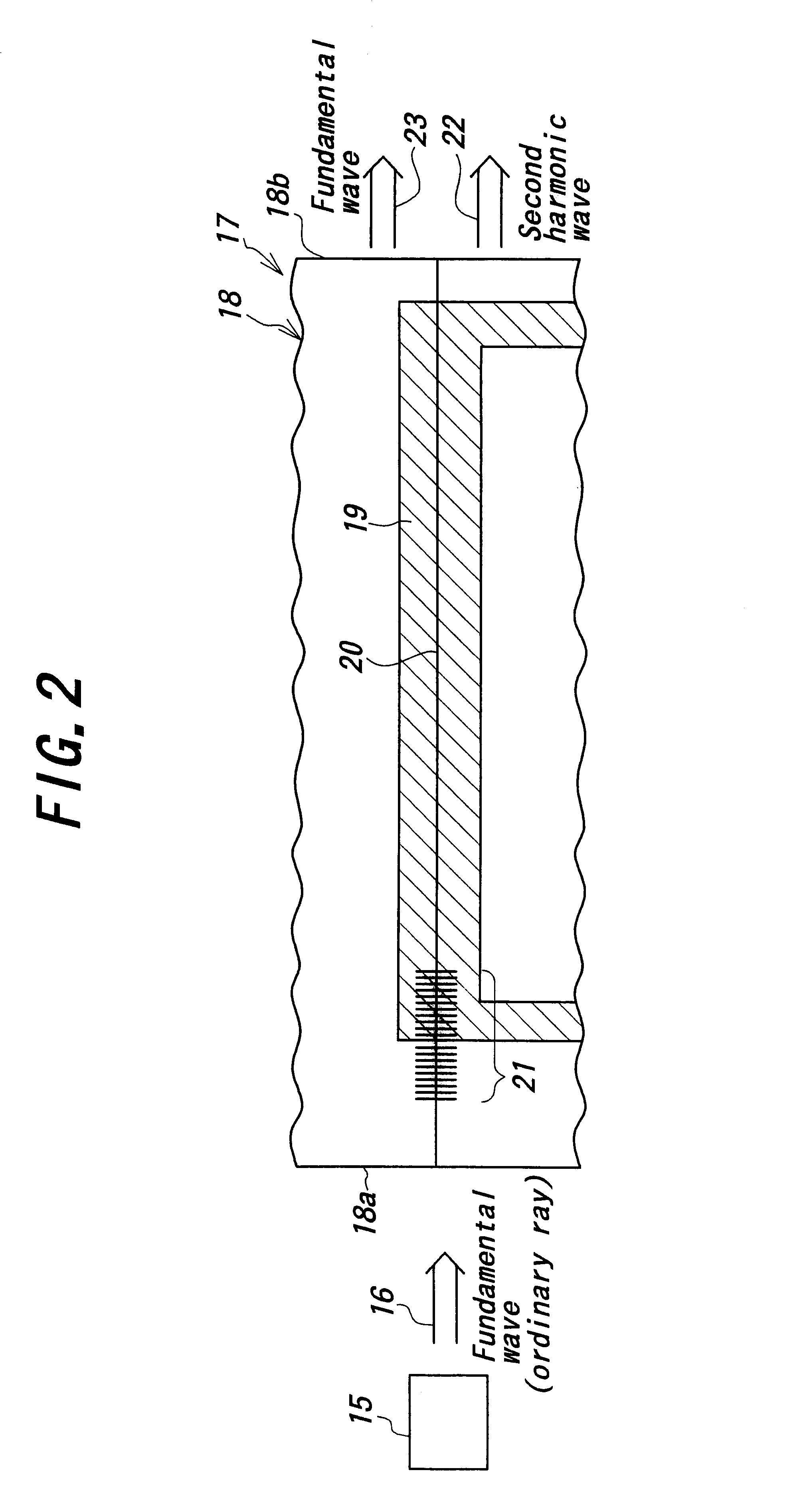Method for producing a single-crystalline film of KLN or KLNT
a single-crystalline film, kln or klnt technology, applied in the direction of polycrystalline material growth, crystal growth process, instruments, etc., can solve the problems of difficult to practice these techniques to manufacture practical devices, difficult to perform techniques, and deterioration of the crystallinity of the single-crystalline film on on
- Summary
- Abstract
- Description
- Claims
- Application Information
AI Technical Summary
Benefits of technology
Problems solved by technology
Method used
Image
Examples
example
Production of a KLNT Single-crystalline Substrate
In this example, a KLNT single-crystalline substrate was produced according to a method shown in JP-A-8-339002. Concretely, powdery potassium carbonate, lithium carbonate, niobium oxide, and tantalum oxide were mixed at a composition ratio of 30:20:48:2 to obtain a powdery raw material. About 50 g of the powdery raw material was put into a planer crucible made of platinum (a thickness of 1 mm and a width of 50 mm) and the crucible was set in a given position in a furnace. The powdery raw material in the crucible was melted, while an upper space in the furnace was controlled to a temperature range of 1100.degree. C. to 1200.degree. C. A KLNT single-crystalline substrate having a "C" crystal face could be successfully pulled down in a direction of an "a" axis thereof at the rate of 20 mm / hour, while the temperature of a single crystal growing part was set to a temperature range of 1050.degree. C. to 1150.degree. C.
A composition of the t...
PUM
| Property | Measurement | Unit |
|---|---|---|
| temperature | aaaaa | aaaaa |
| temperature | aaaaa | aaaaa |
| Curie temperature | aaaaa | aaaaa |
Abstract
Description
Claims
Application Information
 Login to View More
Login to View More - R&D
- Intellectual Property
- Life Sciences
- Materials
- Tech Scout
- Unparalleled Data Quality
- Higher Quality Content
- 60% Fewer Hallucinations
Browse by: Latest US Patents, China's latest patents, Technical Efficacy Thesaurus, Application Domain, Technology Topic, Popular Technical Reports.
© 2025 PatSnap. All rights reserved.Legal|Privacy policy|Modern Slavery Act Transparency Statement|Sitemap|About US| Contact US: help@patsnap.com



